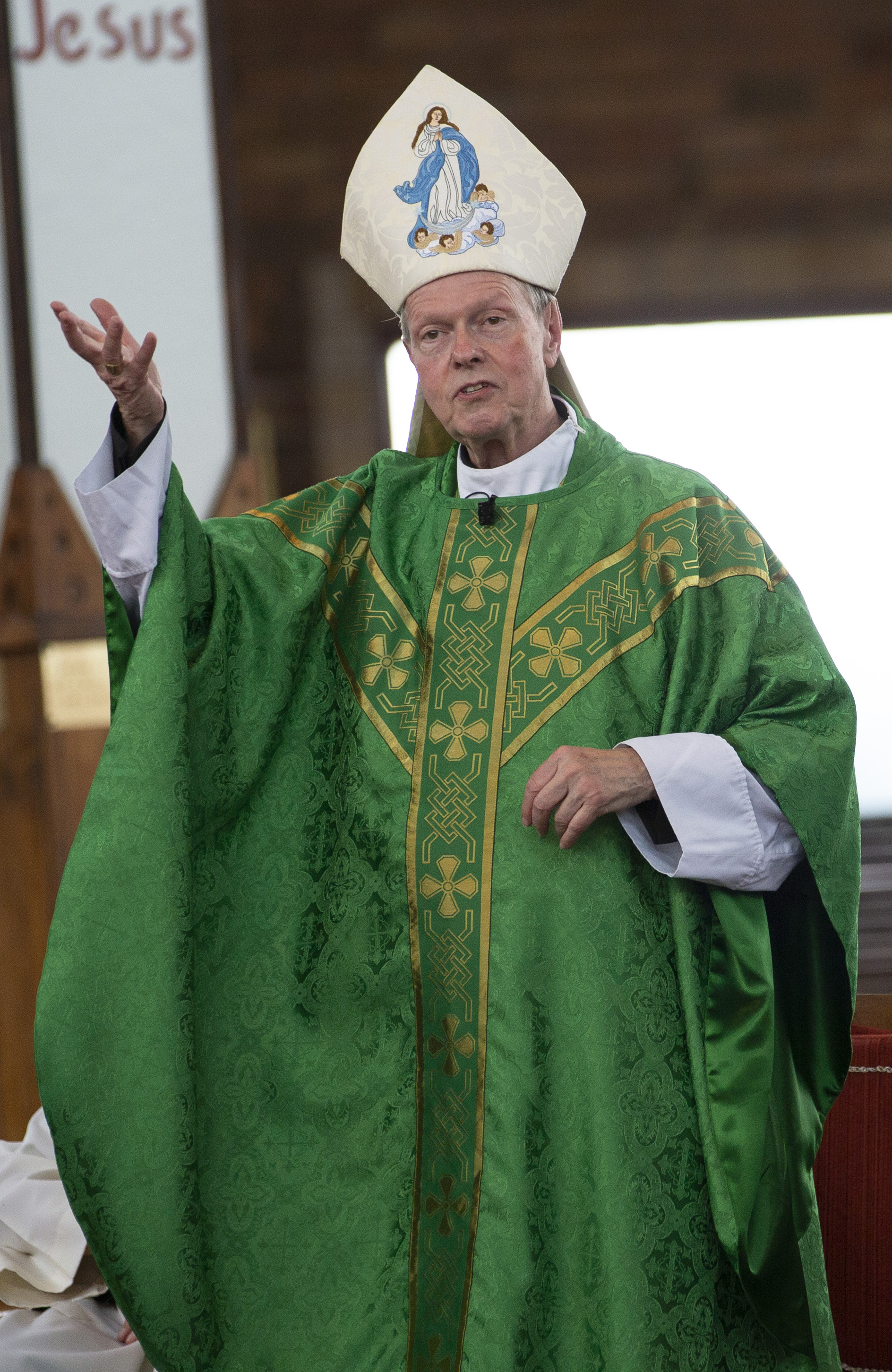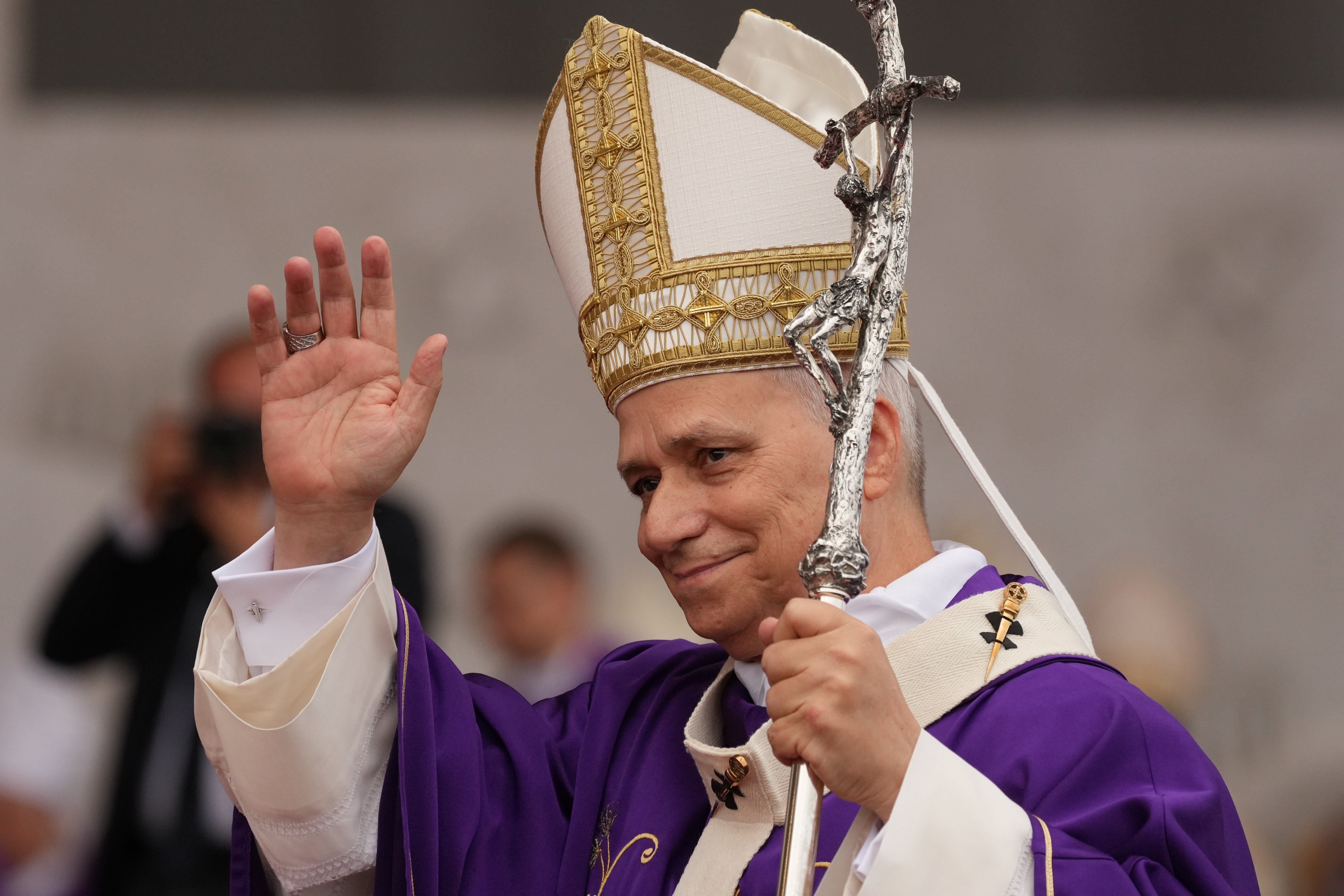April 24, 2019 at 2:48 p.m.
The Traditional Latin Mass (also known as the Extraordinary Form of Mass, Tridentine Rite, Classical Roman Rite, Usus Antiquior, etc.) is celebrated on a regular basis at several churches in the Roman Catholic Diocese of Albany — and our own Bishop Edward Scharfenberger has offered the Traditional Latin Mass on several occasions. As with our current form of the Mass, this form of the sacred liturgy has its origins in apostolic times.
The liturgy has always been reformed, while also remaining essentially and substantially the same. In 1570, a major reform was made so that there would be “one rite for the celebration of Mass” and also to “restore[d] the Missal itself to the original form and rite of the holy Fathers” (1570, Apostolic Constitution, Quo Primum, of Pope Saint Pius V). This Mass, as noted above, is also known as the Tridentine, Extraordinary Form or Traditional Catholic Mass.
It remained in general use throughout the whole world and would have been the Mass that the North American Martyrs brought to upstate New York. It remained in use until the latest reform of the Mass after the Second Vatican Council in the late 1960s and early 1970s.
The Traditional or Tridentine Latin Mass does not simply appeal to older Church members by way of nostalgia. Rather, it has been amply demonstrated that young persons have discovered this liturgical form of encounter with the Mystery of the Most Holy Eucharist particularly suited them. Recognizing the “rightful aspirations” of “all those Catholic faithful who feel attached to some previous liturgical and disciplinary forms of the Latin liturgical tradition” and that “respect must everywhere be shown for (their) feelings,” Pope St. John Paul II in his Apostolic Letter Ecclesia Dei afflicta (1988) authorized the widespread celebration of the Traditional Mass and sacraments, subject to episcopal permission.
More recently, Pope Benedict XVI, in his 2007 Apostolic Letter, motu proprio, Summorum Pontificum, granted parish priests the right to celebrate the older form of the Mass freely under certain circumstances. Additionally, the faithful who desire this Mass may request it from their pastors, who should willingly accept their requests to celebrate this Mass.
The issuance of Summorum Pontificum gave further impetus to the already substantial growth in the celebration of the Traditional Latin Mass in the United States and throughout the world. Today, most every diocese in the United States offers at least one regularly scheduled Sunday Mass in the Extraordinary Form. Many offer multiple Masses/locations, including daily Mass, and all the other sacraments in their traditional form. Additionally, priestly societies that bring a full traditional parish life to their locations, such as the Priestly Fraternity of Saint Peter (FSSP) and the Institute of Christ the King Sovereign Priest (ICRSS), while founded relatively recently, are growing consistently, blessed with many younger vocations.
Likewise, a number of contemplative religious communities that worship in the traditional rites, including Benedictines and Discalced Carmelites, are increasing in number. The laity who attend the Traditional Latin Mass are comprised of all ages, from all backgrounds. This is a surprise to some, who thought the “old Mass” would appeal only to those nostalgic for it from their youth. In fact, it has a great appeal to many young and younger Catholics, once they are exposed to it. This is a further great sign of hope in these otherwise perilous times for the Church.
Some of the most visible ways in which the Extraordinary Form differs from the Ordinary Form (i.e. Novus Ordo, vernacular Mass, etc.) include the wider use of Latin (except for the homily and readings which sometimes are read in both languages), the use of Gregorian chant and polyphony instead of hymnals, the priest and congregation mostly facing the same direction (ad orientem,?or to the east, toward the altar), much more silence, communion reception kneeling and on the tongue and more. None of these aspects should be taken for granted, for they carry deep meaning – the whole liturgy does. Even what may seem like the smallest detail signifies something, and the silence helps the faithful enter into the mystery more deeply.
Many folks attending the Traditional Latin Mass for the first time may find themselves somewhat lost or confused. However, after several times in attendance, they will often be drawn to the reverence, mystery and focus on the worship of Almighty God inherent in this form of Mass.
The Extraordinary Form/Traditional Latin Mass/Tridentine Mass is offered in the Albany Diocese each Sunday and Holy Day of Obligation at Sacred Heart Church in Albany at 11 a.m. every Sunday except for 12:30 p.m. on the first Sunday of the month and St. Joseph Church in Troy at noon. It is offered on the third Sunday of the month at St. Mary’s in Amsterdam at 4:30 p.m. and at Our Lady of Martyrs Shrine at Auriesville on the first Sunday of the month at 3 p.m. in season. Daily Mass is also offered at Sacred Heart on Tuesday and Thursday at 7 a.m.; Saturday at 8:00 a.m., at Saint Joseph’s on Monday, Wednesday and Friday at noon and at St. Mary’s on First Fridays at 5 p.m. and First Saturdays at 8 a.m.
Paul M. Audino, a native and lifelong resident in the Diocese, and his family have attended the Traditional Latin Mass/Tridentine Mass/Extraordinary Form on a regular basis, since it was (re)introduced in the Albany Diocese in 1999.
- Catholic writer Kathryn Jean Lopez on the pro-life movement’s ‘front lines of love’
- Pope Leo XIV to visit Spain this summer, with stops in Madrid, Barcelona and the Canary Islands
- Minneapolis Catholic leaders speak out about community fear after ICE-involved shooting
- Pope delivers fierce defense of the unborn in address to diplomatic corps
- Full text: Pope Leo XIV’s address to diplomatic corps Jan. 9, 2026
- Amid housing shortage, Trump seeks ban on corporations buying homes
- House passes extension of Obamacare subsidies for 3 years after 17 Republicans break ranks
- Senate advances war powers resolution on Venezuela, may consider Greenland measure
- Cardinals leave consistory with a clear vision from pontiff: ‘A Church that cares’
- Fathom Entertainment encores Lord of the Rings trilogy








Comments:
You must login to comment.